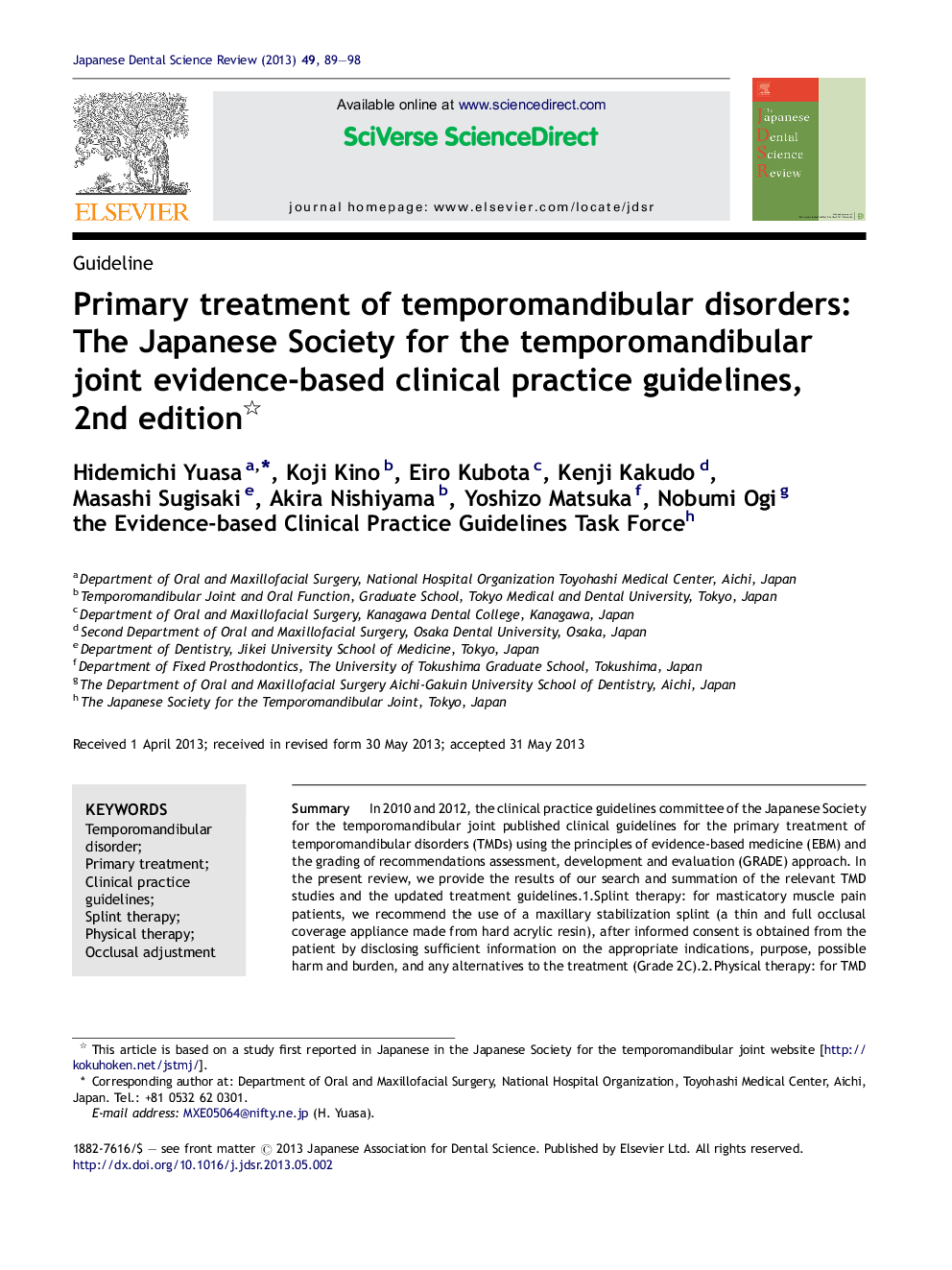| Article ID | Journal | Published Year | Pages | File Type |
|---|---|---|---|---|
| 3136251 | Japanese Dental Science Review | 2013 | 10 Pages |
SummaryIn 2010 and 2012, the clinical practice guidelines committee of the Japanese Society for the temporomandibular joint published clinical guidelines for the primary treatment of temporomandibular disorders (TMDs) using the principles of evidence-based medicine (EBM) and the grading of recommendations assessment, development and evaluation (GRADE) approach. In the present review, we provide the results of our search and summation of the relevant TMD studies and the updated treatment guidelines. 1.Splint therapy: for masticatory muscle pain patients, we recommend the use of a maxillary stabilization splint (a thin and full occlusal coverage appliance made from hard acrylic resin), after informed consent is obtained from the patient by disclosing sufficient information on the appropriate indications, purpose, possible harm and burden, and any alternatives to the treatment (Grade 2C).2.Physical therapy: for TMD patients who are suffering from a mouth-opening disturbance caused by disk displacement, we suggest the optimal use of a manual and self-mouth-opening exercise with/without NSAID administration after sufficient information on disease including disk position is provided to the patient (Grade 2B).3.Occlusal adjustment: for TMD symptoms, we recommend against occlusal adjustment about primary treatment (Grade 1D).
